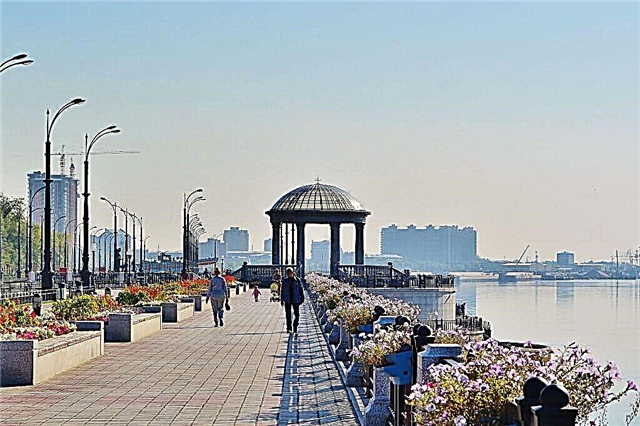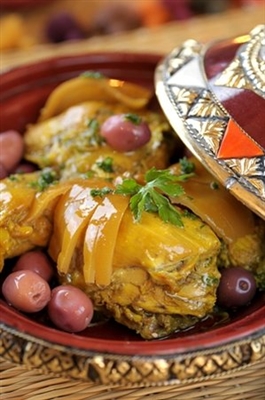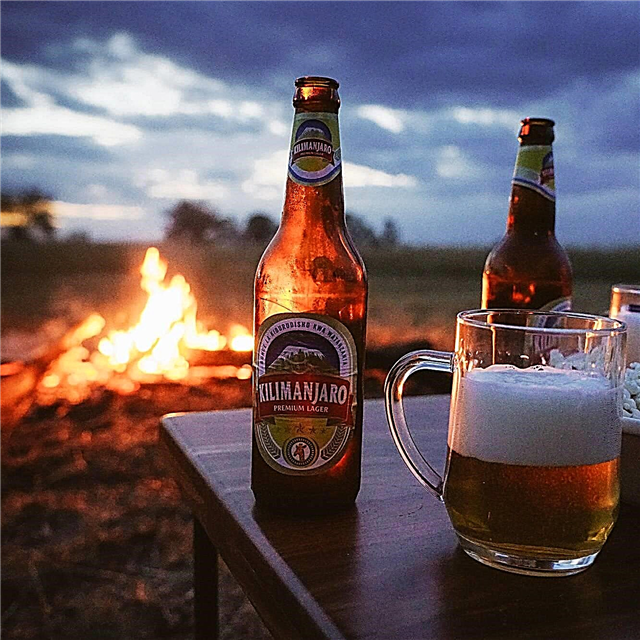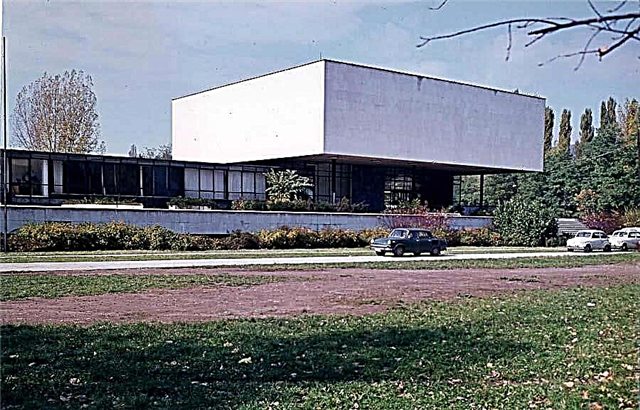Many inexperienced tourists cannot even confidently say where Bosnia and Herzegovina is, and in response to a question about rest there, they answer that this country is unattractive compared to its closest neighbors - Croatia and Montenegro. There is supposedly nothing to do there, especially after the Balkan war. And it is located somehow in the shadow of the promoted tourist routes. However, all this reasoning is not entirely correct. Yes, the Balkan conflict has caused serious damage to the country, but recently the sights of Bosnia and Herzegovina are confidently winning the interest of tourists with their natural beauty, mild climate, high-quality ski resorts, a sufficient number of architectural monuments of past centuries and delicious cuisine. We want to introduce you to this country and tell you about the most interesting places and sights.
History Museum (Sarajevo)

The exposition of the museum consists of two parts: historical and modern, dedicated to the Balkan war. The history of the museum begins in 1945, when, bit by bit, they began to collect exhibits related to the history, architecture, crafts, and everyday life of the country. Now there are more than 400 thousand different items, unique collections of Yugoslav masters. The modern exhibition is dedicated to the civil war of the 90s of the last century and the siege of Sarajevo. All the exhibits speak of the difficult years passed, even most of the souvenirs are made from shell casings, of which a large number have survived after the war. The ticket price is 5 euros.
Military Tunnel (Sarajevo)

This tunnel was dug by the inhabitants of the city during its siege. It got its second name "the tunnel of life" due to the ability to deliver humanitarian aid to the city and, if necessary, safely leave it for civilians. The tunnel is about 700 meters long. It was dug up around the clock for three months. Not far from the airport, where the entrance to the tunnel is located, there is a private museum with exhibits dedicated to military events. Entrance to the museum - 5 euros.
Latinska Chupriya Bridge (Sarajevo)

The capital of Bosnia is famous for the fact that it is here that the First World War originates. On the Latin Bridge, the heir to the Austro-Hungarian Empire, Franz Ferdinand, and his wife were killed, which became the reason for the outbreak of hostilities that claimed the lives of millions of people. Latin it was named after the place of residence of Catholics, who were called Latins. the stone bridge was built in the 16th century, suffered several destruction from floods and reconstruction. Today, every tourist seeks to take a picture at this historical place.
Museum of Herzegovina (Mostar)

The unofficial capital of Herzegovina is located on the banks of the Neretva. The sights of Mostar begin with a museum that has collected all the country's historical and cultural heritage: archaeological finds, ethnographic exhibits, many photos and historical documents, an extensive numismatic collection, antique furniture and much more. The pride of the museum is its film archive and large library. The ticket price is 2.5 euros.
Medjugorje (Chitluk community, Medjugorje village)

25 km from Mostar, in the village of Medjugorje, an unexpected event happened in 1981: six children saw the Mother of God and talked to her several times. The official church does not recognize this phenomenon, but the village has become a place of pilgrimage for Christians. More than a million people come here every year.
Gazi-Khosrevbey Mosque (Sarajevo)

Built in the 16th century, the white-stone mosque with a high minaret has an elegant architecture, light construction and austere decoration. It is one of the most beautiful Islamic monuments in the country. The adjacent structures are no less interesting: a marble fountain, a place for ablutions, a clock tower, and the burial place of the great Bosnians. Entrance - 2 euros.
Memorial complex "Valley of Heroes" (Focha, Tientište village)

In 1943, the Battle of Sutjesk took place between the combined German-Italian-Croatian-Bulgarian troops and the Yugoslav partisans. A total of 18 thousand partisans fought against an army of 127 thousand and won, depriving Germany of control of the country. The complex consists of a central monument, a museum of the battle and several memorial signs installed at the battle sites. Protected by UNESCO since 2011.
Markale Square (Sarajevo)

This is the central market square with many shops and cafes. In medieval times, the square was located at the intersection of trade routes and arose thanks to merchants who sold their goods here. Since then, it has not changed its purpose: it is still very lively, colorful shopping arcades, goodies are sold. "You can buy edible souvenirs as a gift for your friends."
Cathedral of the Sacred Heart of Jesus (Sarajevo)


Attractions Sarajevo is represented by the largest temple in the country - the Sarajevo Cathedral. After the annexation of Bosnia to Austria-Hungary, in which Catholicism played a leading role, the construction of a cathedral was required. Its construction was completed by the end of the 19th century, and it became the main Catholic church in the country. The architecture of the temple has made it one of the best attractions in the city.
Tvrdos Monastery (Trebinje municipality, Tvrdos village)

The oldest religious landmark of the country has an ancient history: it was built in the 4th century by the Emperor Constantine the Great, and the Serbian Orthodox ascetic Vasily Ostrozhsky was tonsured here as a monk. And the monastery has also become famous as a center of winemaking. During its existence, the monastery was destroyed several times to the ground, but each time it was restored and today it is a very popular tourist attraction.
Fortress Pochitel (Chaplin)

The walled city was built in the 14th century. Once a military facility, today the fortress has become a place of pilgrimage for tourists. A donjon tower, a mosque with a 400-year-old cypress growing in the courtyard, a hamam, a madrasah, and a clock tower are open for them. "You can walk along the fortress walls with towers to your heart's content, explore the bastions." The fortress is included in the UNESCO World Heritage Site. Excursion for 3 people - 40 euros.
Baths of Ilidza

This balneological resort with mineral and thermal springs is located in the suburbs of Sarajevo. Due to the location of the resort in the hollow, cold winds bypass it and create comfortable conditions for relaxation. Healing water and sulphide mud have an effective therapeutic effect. "There are many different pools, spas, Pilates or aqua aerobics available after the treatments."
The abode of the dervishes (Blagai)

A guest house for wandering monks is located 10 kilometers from Mostar. The location was chosen under a rock, in a secluded place conducive to reflection and prayer. The monastery was built in the early 16th century in the Ottoman Baroque style of wood. The shrines of the monastery are two burials - Sufi Sari Saltik and Sheikh Ashik Pasha. Entrance ticket - 2 euros.
Kraljeva Suteska Monastery (Sarajevo)

The Franciscan monastery in a cozy village near Sarajevo has become one of the main attractions to see in Bosnia and Herzegovina. The monastery, built in the 14th century, has a magnificent architecture. Several times it was exposed to fires and destroyed, but after restoration in 1890 its appearance was no longer changed. There is a museum at the monastery, which contains rare copies of books.
Old Bridge (Mostar)

A pedestrian bridge across the Neretva River connects the two parts of the historic city. Once built by the Turks in the 16th century, it had the widest arch in the world, 28 meters wide and 20 meters high.In the fifth hundred years, in 1993, the bridge was shelled during the Balkan war and collapsed. In 2004, it was restored to its original form and now it is a UNESCO protected area.
Travnik old town

The sights of Bosnia are also in this city with beautiful old houses, graceful churches, an old fortress. The beautiful name of the city comes from the grassy area, and it has become known since the Middle Ages, when the Sultan of Ottomania Mehmed P. stayed in it. The convenient location of the city contributed to its establishment as a trade center. The influence of the Turks affected the architecture of buildings, as a result of which it was called the European Istanbul.
House of Biscevic (Mostar)

During the Ottoman period, many beautiful architectural structures were built, including this house. Interesting facts: from 1635 to this day, the house belongs to this family. The owners, however, do not live here, and there is a museum in the house. The building itself was built in the Turkish style: high walls protect women from prying eyes, inside there is a division into the female and male halves. You can get old clothes from the chest and try them on.
Jahorina (Sarajevo)

The Olympic ski resort is located near Sarajevo and is considered one of the best. Founded in the early 30s of the 20th century, it began its rapid development after the Second World War and already in the early 70s received international status. In 1984, Olympic alpine skiing competitions were held here. The length of the track for the descent is 2350 m, for the run - 18 km. Equipment rental - 60 euros per week.
Bascarsija Square (Sarajevo)

The main city trade square has not changed its purpose since 1462 and today it has also become a cultural and historical center of the city. Many streets originate from it, on the east side there is a mosque, on the south - the Museum of Brus Bezistan, in the north - the Sebil fountain and the oldest mosque with a dome of Chekrekchin. Many souvenirs are sold in the market.
Vrelo-Bosne park
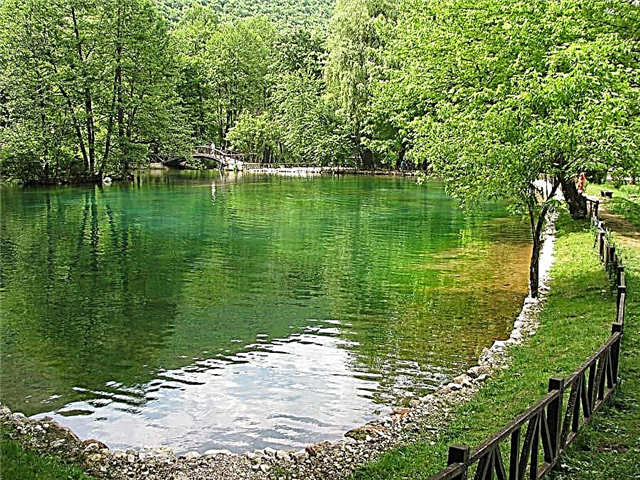
On the outskirts of Sarajevo, there is a natural park founded during the Austro-Hungarian domination. The Bosna River flows through its territory, the banks of which are connected by a Roman bridge. The name of the bridge comes from the Roman materials from which it was built. During the Balkan War, the park suffered significant damage. But the public of the region took part in the restoration of the park in 2000 and now it has the same appearance.
Kravice waterfall (Mostar)

If you have not yet decided what to see in Bosnia, we suggest observing the natural beauty of streams of water flying from a height of 28 meters. Several waterfalls form a semicircle of several tens of meters. It used to be home to hundreds of mills, but today it is a popular holiday destination. The entrance ticket is 5 euros.
National Theater (Sarajevo)

One of the oldest cultural institutions in the country was founded in 1919 and is located in the building of the Czech architect Karel Parik, who made a great contribution to the architecture of Sarajevo. Initially, the theater was a drama theater, but later they began to stage ballet and opera performances. Today the theater is well known in the theatrical world.





